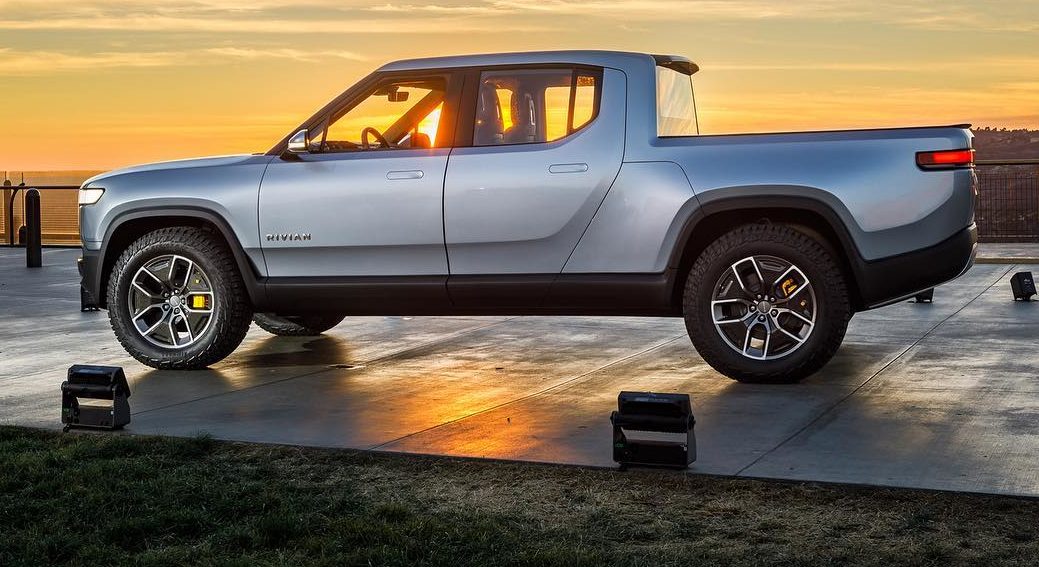
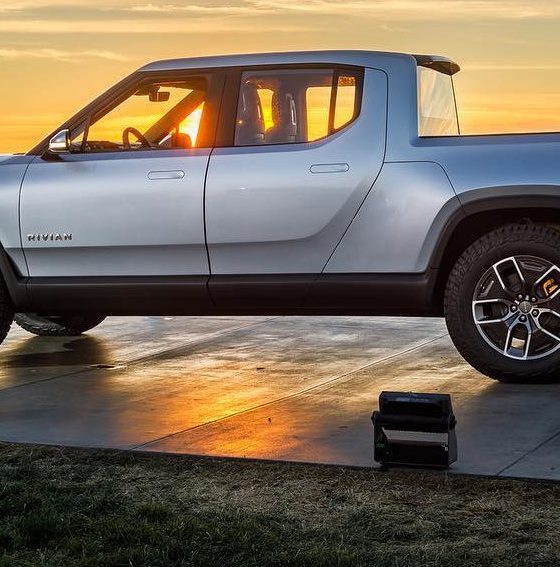
News
Rivian's new 'Guardian Mode' will safely move passengers without any driver present
A new patent submitted by electric car maker Rivian aims to create a safe traveling experience without anyone actually operating the vehicle. This would allow the vehicle to transport individuals who are not fully-competent to operate a vehicle to a destination without having a driver present.
Rivian named the patent “Systems and Methods for Operating an Autonomous Vehicle in a Guardian Mode,” and filed it to the United States Patent Office on June 11, 2019. The patent would create a new mode that could allow a physical driver to not actually be present for the duration of a trip. It would instead give the vehicle’s owner the option to request a ride for someone who is not capable of legally or safely operating the vehicle, like a child or a senior citizen. The company calls this capability “Guardian Mode.”
Using examples like a child needing a ride home from school, Rivian mentions that the development of autonomous vehicles are allowing for safe travel without someone having to be in direct control of the vehicle. However, there is the possibility for someone who is not fully competent to still control the car and make use of the vehicle’s autonomous features to travel, even if they are not legally able to.
Rivian explains this point further in the following section:
“Modem autonomous vehicle technology allows an autonomous vehicle to transport passengers between destinations without being directly controlled by a human driver. Consequently, it is now possible for an autonomous vehicle to transport a user who is not fully competent (e.g., a child user, a senior citizen user, or a mentally challenged user) without a fully competent user being present. However, in such a situation, a user who is not fully competent may misuse the capabilities of the autonomous vehicle while in transit. Such misuse may lead to undesirable situations (e.g., a child requesting to go to a wrong location), or even dangerous situations (e.g., a child opening a door while the car is still in motion, or a child unbuckling a seat belt). Consequently, what is needed is an autonomous vehicle with a mode of operation that is appropriate for transporting users who are not fully competent.”
The new “Guardian Mode” would be activated by initially having a user request a destination for their vehicle. Subsequently, the vehicle would ask the user if it would be operating in “Regular Driving Mode” with a driver present, or in “Guardian Mode” without someone directly operating the vehicle. The car would then decide upon a route of travel based on this selection.
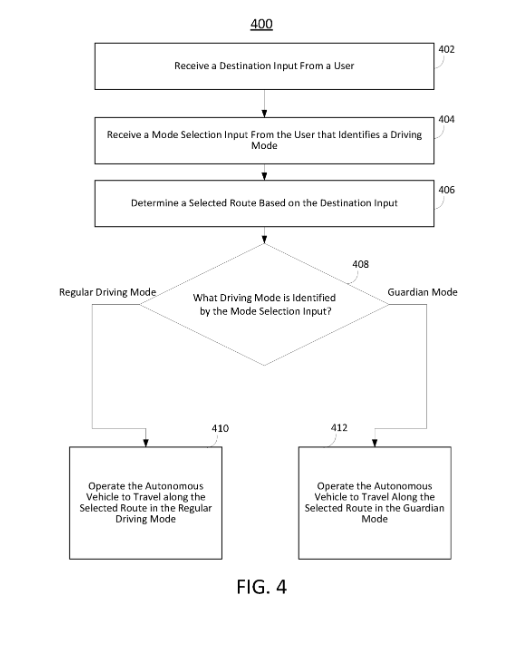
“Guardian Mode” would give the person who is present some freedoms within the vehicle, like radio or music operation, climate control, opening or closing windows, or in some cases, request a destination change. All of these options would be enabled or disabled by the owner of the car. They would input a PIN or passcode that would activate or deactivate each of these settings. The patent also states that the vehicle would be in constant connection with a laptop or smartphone to allow for communication between the vehicle and the owner.
In October, Rivian submitted a different patent for a control system that would customize a user’s ability to control certain functions within the vehicle. This was an attempt to increase the safety of the company’s fully-autonomous platform because they recognized that not everyone should have access to some features of the vehicle.
In an attempt to create a safer road, Rivian’s several patents geared toward the development of fully-autonomous driving are a recognition that there are loopholes within the overall framework of the idea. While self-driving vehicles are new and exciting and safer than humans in many ways, there are certain functions that are open for user abuse. One incident of a child getting behind the wheel of an autonomous car could spell disaster for the entire industry and may set back autonomous traveling technology back several years. Before the world commits to a fully autonomous driving future, the industry’s leaders must confront the obvious issues. The submission of these patents is proof that Rivian is facing these challenges head-on.

News
Tesla’s most affordable car is coming to the Netherlands
The trim is expected to launch at €36,990, making it the most affordable Model 3 the Dutch market has seen in years.
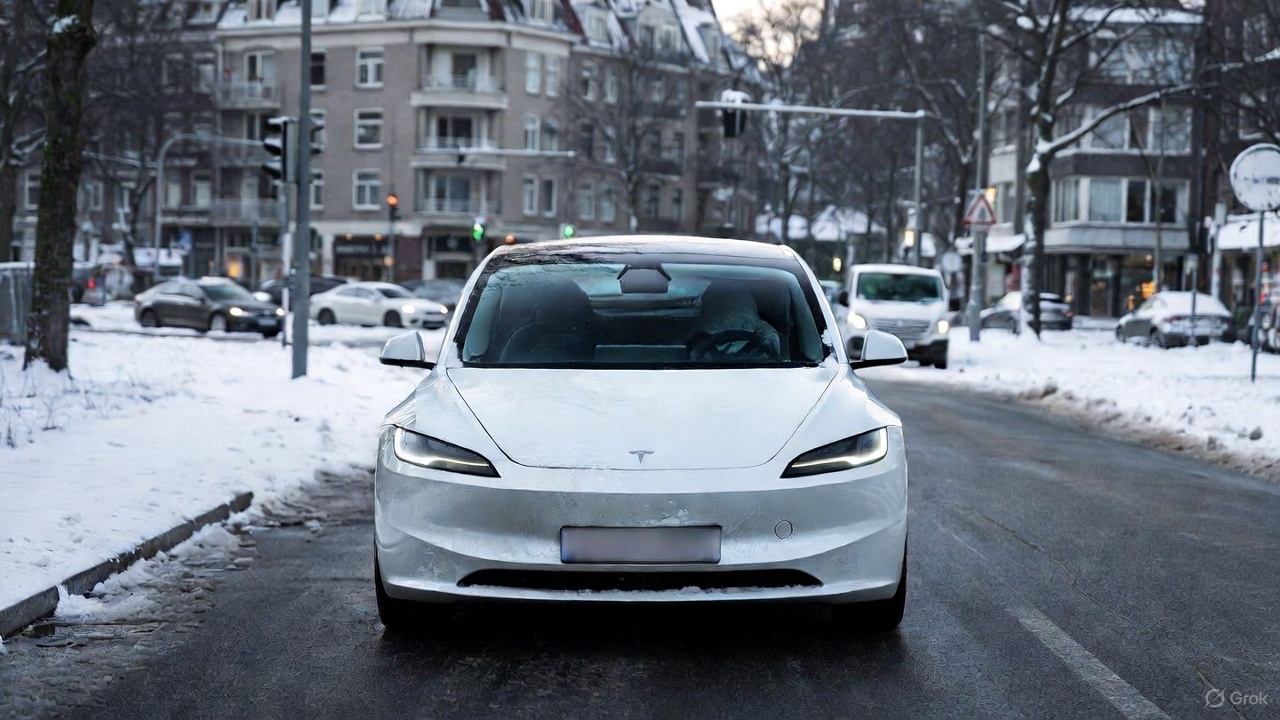
Tesla is preparing to introduce the Model 3 Standard to the Netherlands this December, as per information obtained by AutoWeek. The trim is expected to launch at €36,990, making it the most affordable Model 3 the Dutch market has seen in years.
While Tesla has not formally confirmed the vehicle’s arrival, pricing reportedly comes from a reliable source, the publication noted.
Model 3 Standard lands in NL
The U.S. version of the Model 3 Standard provides a clear preview of what Dutch buyers can expect, such as a no-frills configuration that maintains the recognizable Model 3 look without stripping the car down to a bare interior. The panoramic glass roof is still there, the exterior design is unchanged, and Tesla’s central touchscreen-driven cabin layout stays intact.
Cost reductions come from targeted equipment cuts. The American variant uses fewer speakers, lacks ventilated front seats and heated rear seats, and swaps premium materials for cloth and textile-heavy surfaces. Performance is modest compared with the Premium models, with a 0–100 km/h sprint of about six seconds and an estimated WLTP range near 550 kilometers.
Despite the smaller battery and simpler suspension, the Standard maintains the long-distance capability drivers have come to expect in a Tesla.
Pricing strategy aligns with Dutch EV demand and taxation shifts
At €36,990, the Model 3 Standard fits neatly into Tesla’s ongoing lineup reshuffle. The current Model 3 RWD has crept toward €42,000, creating space for a more competitive entry-level option, and positioning the new Model 3 Standard comfortably below the €39,990 Model Y Standard.
The timing aligns with rising Dutch demand for affordable EVs as subsidies like SEPP fade and tax advantages for electric cars continue to wind down, EVUpdate noted. Buyers seeking a no-frills EV with solid range are then likely to see the new trim as a compelling alternative.
With the U.S. variant long established and the Model Y Standard already available in the Netherlands, the appearance of an entry-level Model 3 in the Dutch configurator seems like a logical next step.
News
Tesla Model Y is still China’s best-selling premium EV through October
The premium-priced SUV outpaced rivals despite a competitive field, while the Model 3 also secured an impressive position.
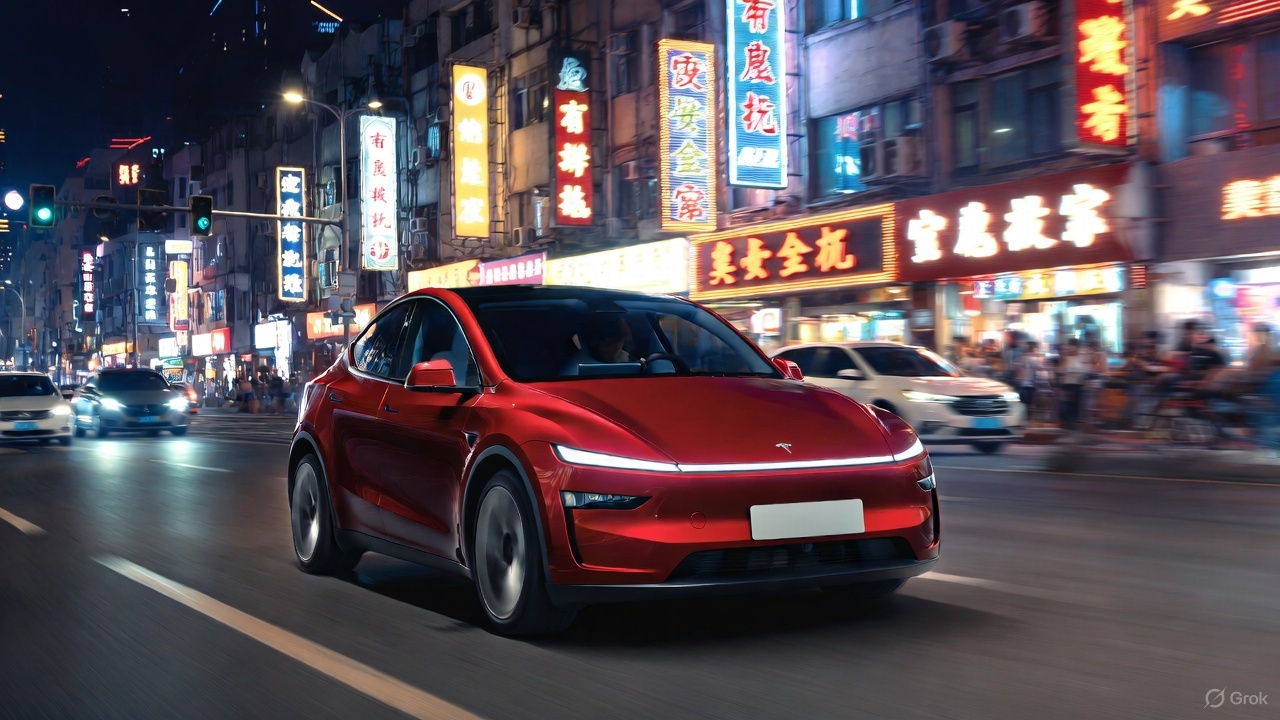
The Tesla Model Y led China’s top-selling pure electric vehicles in the 200,000–300,000 RMB segment through October 2025, as per Yiche data compiled from China Passenger Car Association (CPCA) figures.
The premium-priced SUV outpaced rivals despite a competitive field, while the Model 3 also secured an impressive position.
The Model Y is still unrivaled
The Model Y’s dominance shines in Yiche’s October report, topping the chart for vehicles priced between 200,000 and 300,000 RMB. With 312,331 units retailed from January through October, the all-electric crossover was China’s best-selling EV in the 200,000–300,000 RMB segment.
The Xiaomi SU7 is a strong challenger at No. 2 with 234,521 units, followed by the Tesla Model 3, which achieved 146,379 retail sales through October. The Model Y’s potentially biggest rival, the Xiaomi YU7, is currently at No. 4 with 80,855 retail units sold.
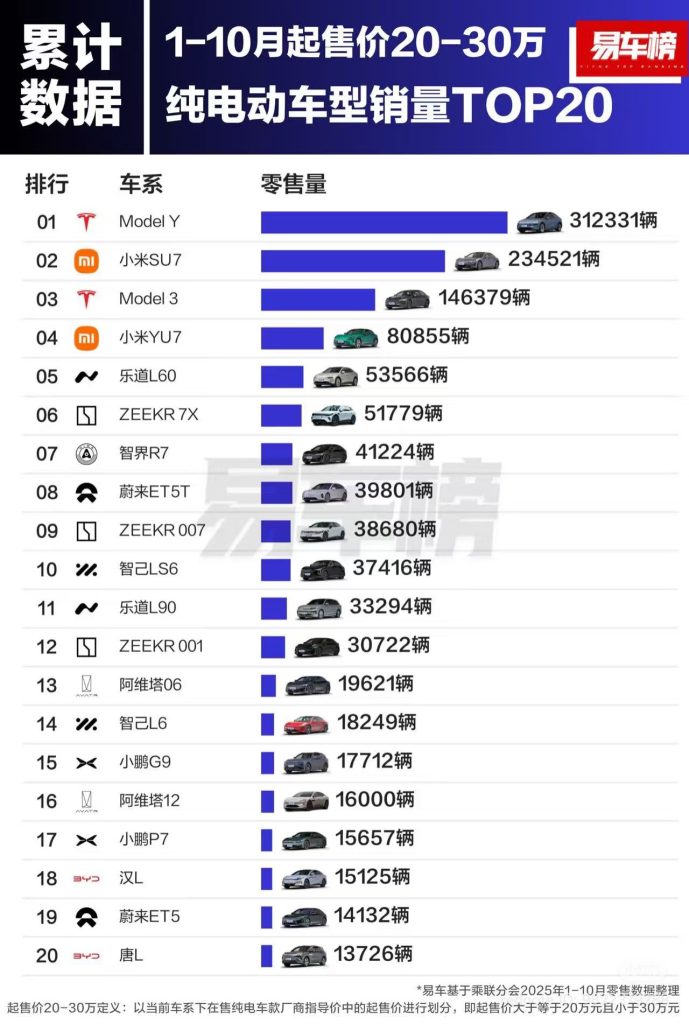
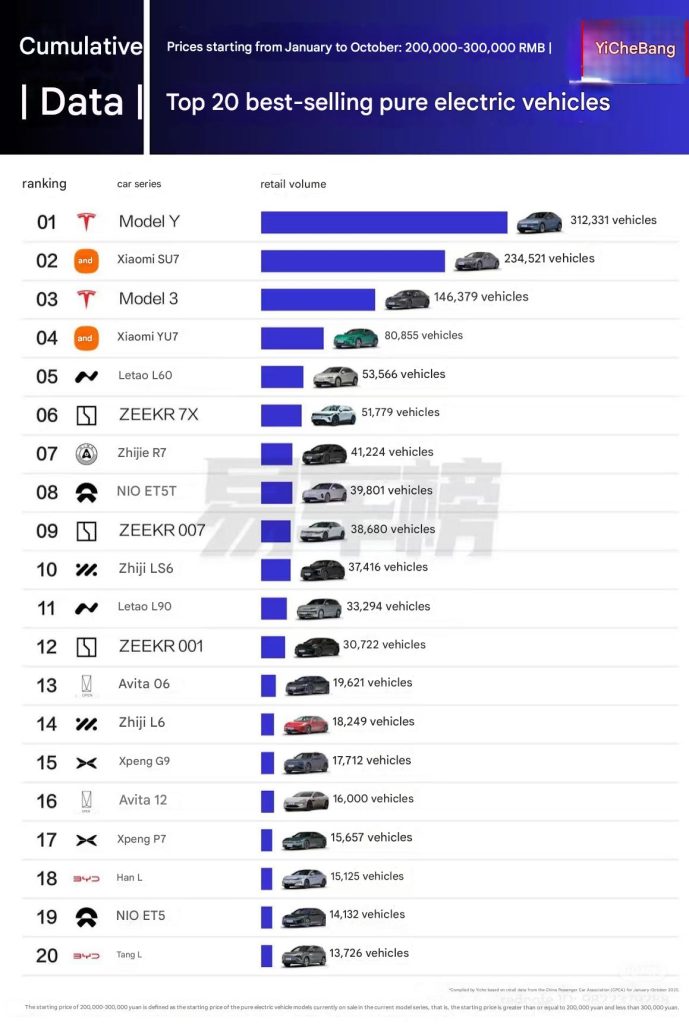
Efficiency kings
The Model 3 and Model Y recently claimed the top two spots in Autohome’s latest real-world energy-consumption test, outperforming a broad field of Chinese-market EVs under identical 120 km/h cruising conditions with 375 kg payload and fixed 24 °C cabin temperature. The Model 3 achieved 20.8 kWh/100 km while the Model Y recorded 21.8 kWh/100 km, reaffirming Tesla’s efficiency lead.
The results drew immediate attention from Xiaomi CEO Lei Jun, who publicly recognized Tesla’s advantage while pledging continued refinement for his brand’s lineup.
“The Xiaomi SU7’s energy consumption performance is also very good; you can take a closer look. The fact that its test results are weaker than Tesla’s is partly due to objective reasons: the Xiaomi SU7 is a C-segment car, larger and with higher specifications, making it heavier and naturally increasing energy consumption. Of course, we will continue to learn from Tesla and further optimize its energy consumption performance!” Lei Jun wrote in a post on Weibo.
Elon Musk
SpaceX’s Starship program is already bouncing back from Booster 18 fiasco
Just over a week since Booster 18 met its untimely end, SpaceX is now busy stacking Booster 19, and at a very rapid pace, too.
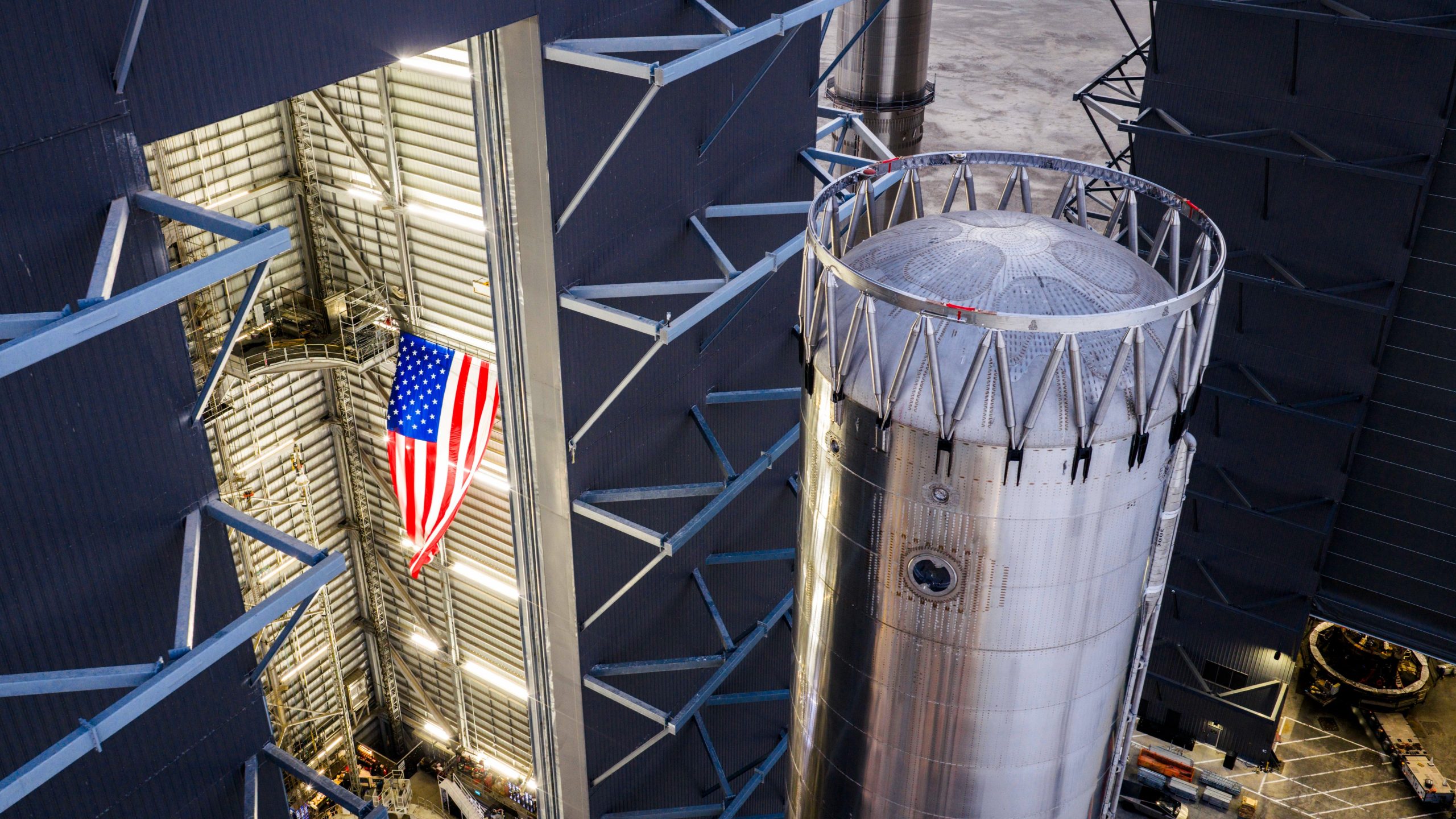
SpaceX is already bouncing back from the fiasco that it experienced during Starship Booster 18’s initial tests earlier this month.
Just over a week since Booster 18 met its untimely end, SpaceX is now busy stacking Booster 19, and at a very rapid pace, too.
Starship V3 Booster 19 is rising
As per Starbase watchers on X, SpaceX rolled out the fourth aft section of Booster 19 to Starbase’s MegaBay this weekend, stacking it to reach 15 rings tall with just a few sections remaining. This marks the fastest booster assembly to date at four sections in five days. This is quite impressive, and it bodes well for SpaceX’s Starship V3 program, which is expected to be a notable step up from the V2 program, which was retired after a flawless Flight 11.
Starship watcher TankWatchers noted the tempo on X, stating, “During the night the A4 section of Booster 19 rolled out to the MegaBay. With 4 sections in just 5 days, this is shaping up to be the fastest booster stack ever.” Fellow Starbase watcher TestFlight echoed the same sentiments. “Booster 19 is now 15 rings tall, with 3 aft sections remaining!” the space enthusiast wrote.
Aggressive targets despite Booster 18 fiasco
SpaceX’s V3 program encountered a speed bump earlier this month when Booster 18, just one day after rolling out into the factory, experienced a major anomaly during gas system pressure testing at SpaceX’s Massey facility in Starbase, Texas. While no propellant was loaded, no engines were installed, and no one was injured in the incident, the unexpected end of Booster 18 sparked speculation that the Starship V3 program could face delays.
Despite the Booster 18 fiasco, however, SpaceX announced that “Starship’s twelfth flight test remains targeted for the first quarter of 2026.” Elon Musk shared a similar timeline on X earlier this year, with the CEO stating that “ V3 is a massive upgrade from the current V2 and should be through production and testing by end of year, with heavy flight activity next year.”
Considering that Booster 19 seems to be moving through its production phases quickly, perhaps SpaceX’s Q1 2026 target for Flight 12 might indeed be more than feasible.









